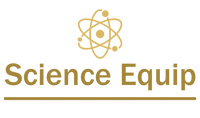Imagine a magical cooker like the one in fairy tales, but in a science lab. That’s a hot plate! But just like you need to be careful with magic, we need to be super careful with hot plates in a chemistry lab.
What is a Hot Plate?
Okay, let’s start from the beginning. A hot plate is like a superhero pan. It gets really, really hot and helps scientists do cool science stuff, like mixing different things together and making them change. It’s like a stove, but for scientists!
Safety Measures Before Using a Hot Plate
Before we dive into the fun stuff, we need to talk safety! Imagine wearing a superhero suit before going on an adventure. Well, before using a hot plate, we wear safety gear too! Goggles, lab coats, and gloves keep us safe from heat and splashes.
Tips for Safe Handling of Hot Plates
Understanding Temperature Settings
The hot plate has its own language—temperature settings. Just like how your toy oven has buttons for different temperatures, a hot plate has knobs that control how hot it gets. We need to know which temperature is just right for our experiments.
Using Appropriate Utensils
Using the right tools is like using the right paintbrush for a masterpiece. We use special glass or metal tools on a hot plate. Plastic melts, so it’s a big no-no!
Cleaning and Maintenance Tips
Remember when Mom cleans the kitchen? Well, we need to keep our hot plates clean too! A clean hot plate works better and stays safe.
Ensuring Proper Ventilation
Imagine if your room got really smoky when you were cooking. Not fun, right? Same with the lab! We need good airflow to keep the air fresh and safe.
Dealing with Spills and Accidents
Oopsies happen! If something spills, we clean it up fast. We also know what to do if someone gets a tiny burn—cool water is like magic!
Switching Off and Cooling Down Safely
Just like turning off a light when leaving the room, we turn off the hot plate when we’re done. But here’s the trick: it stays hot even after it’s off, so we wait for it to cool down.
Storing Hot Plates Properly
After the adventure, superheroes keep their gear safe, right? We store our hot plates carefully so they stay good for the next big experiment.
Common Mistakes to Avoid
Like in a game, there are some rules we always follow. We don’t touch the hot plate without protection, and we don’t leave it unattended.
Conclusion
And that’s it! Working with hot plates is like being a scientist superhero—exciting but with lots of safety rules. Remember, safety comes first!
FAQs
Q1: Can I touch the hot plate without gloves?
Nope, never! Always wear gloves to protect your hands from heat.
Q2: What happens if something melts on the hot plate?
If something melts, turn off the hot plate and let it cool. Then, clean it up carefully.
Q3: Can I use any utensil on a hot plate?
Nope, only use utensils made of glass or metal. Plastic can melt!
Q4: How do I clean a hot plate?
Use a soft cloth and gentle cleaner. Make sure it’s cool before cleaning.
Q5: Can I leave a hot plate on after I’m done?
Nope! Always turn it off when you’re finished and let it cool down safely.
